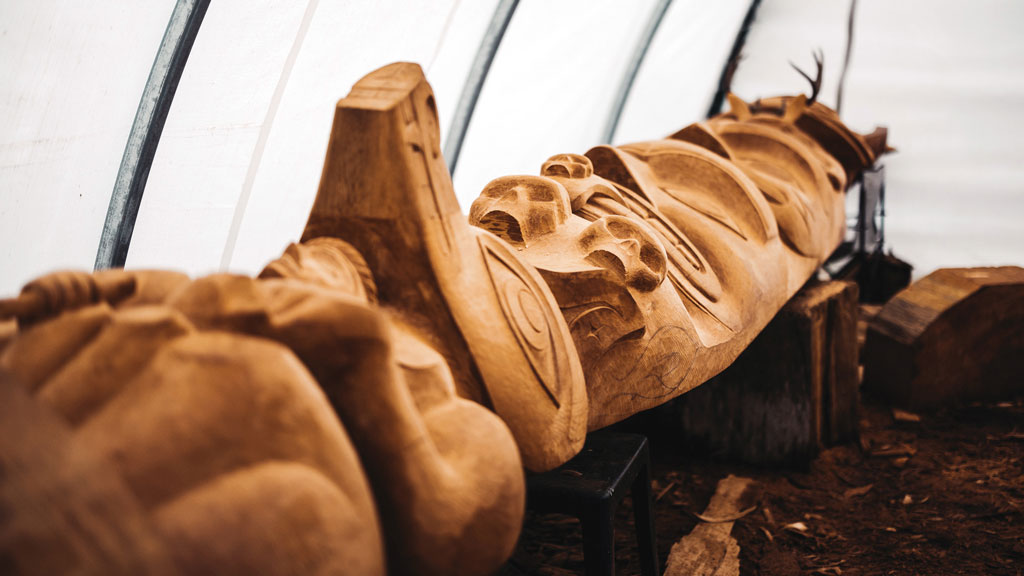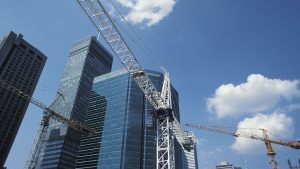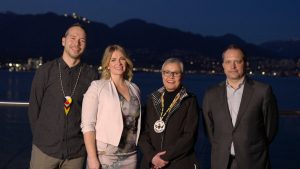A conference held on the National Day for Truth and Reconciliation explored how engineers, architects and construction professionals can be better allies to Indigenous Nations and honour the Truth and Reconciliation Commission’s Calls to Action by supporting Indigenous Protected and Conserved Areas (IPCA).
Building a Foundation for Reconciliation 2022: The Interconnections between Infrastructure, Culture, and Environment was hosted by RJC virtually Sept. 30.
“IPCAs are lands and waters where Indigenous governments have the primary role in protecting and conserving ecosystems through Indigenous laws, governance and knowledge systems,” explained Eric Wilson, who holds a joint position in a partnership between RJC Engineers and the IISAAK OLAM Foundation.
“IPCAs represent two different worldviews coming together in mutual respect to find solutions to the major issues of our time. IPCAs are a progressive opportunity to heal our relationships with Mother Earth and with one another.”
Eli Enns, CEO and president of the IISAAK OLAM Foundation, provided an overview of IPCAs.
“The difference between an Indigenous Protected and Conserved Area and a conventional protected area like a national or provincial park is that we do see humanity and society as a part of the environment. That’s not just guardians, it’s holistic…that includes top to bottom community infrastructure, housing, energy systems, food systems,” said Enns.
“In the spirit of reconciliation, let’s look at how we can bring our various skills and abilities to bear in this endeavour of nation building creating more resilient communities both technically and also spiritually.”
In 2017 an engagement process looking at the state of conservation in Canada led to the IPCA land designation. It was aimed at meeting Canada’s targets to 20 per cent of land and waters conserved by 2020 and now 30 per cent conserved by 2030.
“Currently Canada is at 12.8 per cent,” said Wilson. “IPCAs are seen across all government parties as a way to meet these conservation targets.”
In addition to conservation, there are many positive outcomes for the IPCA model, Wilson added.
This includes the establishment of sustainable infrastructure that exists in harmony with land and culture; the establishment of bioregional economic development opportunities that will benefit both Indigenous and newcomer societies; and promoting reconciliation and decolonization as they honour peace and friendship treaties.
To empower the establishment of IPCAs across Canada, the IISAAK OLAM Foundation created a partnership with MakeWay, the IPCA Development fund.
“The IPCA development fund will provide seed funding to establish IPCAs across Canada, Indigenous led-conservation and Indigenous-led economic development across Canada,” said Wilson. “This fund is now open and accepting donations.”
It will create a space for ideation and innovation and functions, in part, as an incubator for projects in the pilot or early phase of development.
“When certain projects reach a point where they can ‘fly the nest’ so to speak, we move from primary role to more of a secondary role and still support their launch and continue to engage as an active partner,” said Wilson.
One of the initiatives is NaWos Indigenous Apparel for the “Decisive Decade.”
“A large portion of the proceeds of this apparel line will support the maintenance and development of IPCAs across Canada, including Indigenous-led nature conservation and will spur further sustainable economic development.”
Another way for industry to show support is to do their part to fulfill the Truth and Reconciliation Call to Action 92, said Wilson.
“Provide education for management and staff on Indigenous histories; ensure equitable access to employment opportunities, education and economic development; connect to meaningful consultation building relationships and maintain informed consent,” he said.
Wilson also provided tangible examples of how to show support.
“The IISAAK OLAM Foundation provides IPCA productive retreats that are designed for groups of 12 to 20 people with the purpose of building capacity to appropriately support the establishment of IPCAs,” he noted.
The foundation and Vancouver Island University have partnered and designed the advanced IPCA Planning Certificate, Canada’s first post-secondary certificate program specializing in planning for IPCAs. It aims to train the next generation of professional planners and build capacity to support the establishment, management and governance of IPCAs in British Columbia and across Canada.
“This program will give you an in-depth overview of Indigenous histories, state of Indigenous conservation in Canada, planning and establishing and managing IPCAs and generally how to be a better ally to indigenous nations in Canada,” Wilson said.
He also suggested contributing to education funds to bring more Indigenous voices and perspectives to building design.
Follow the author on Twitter @DCN_Angela.











Recent Comments
comments for this post are closed